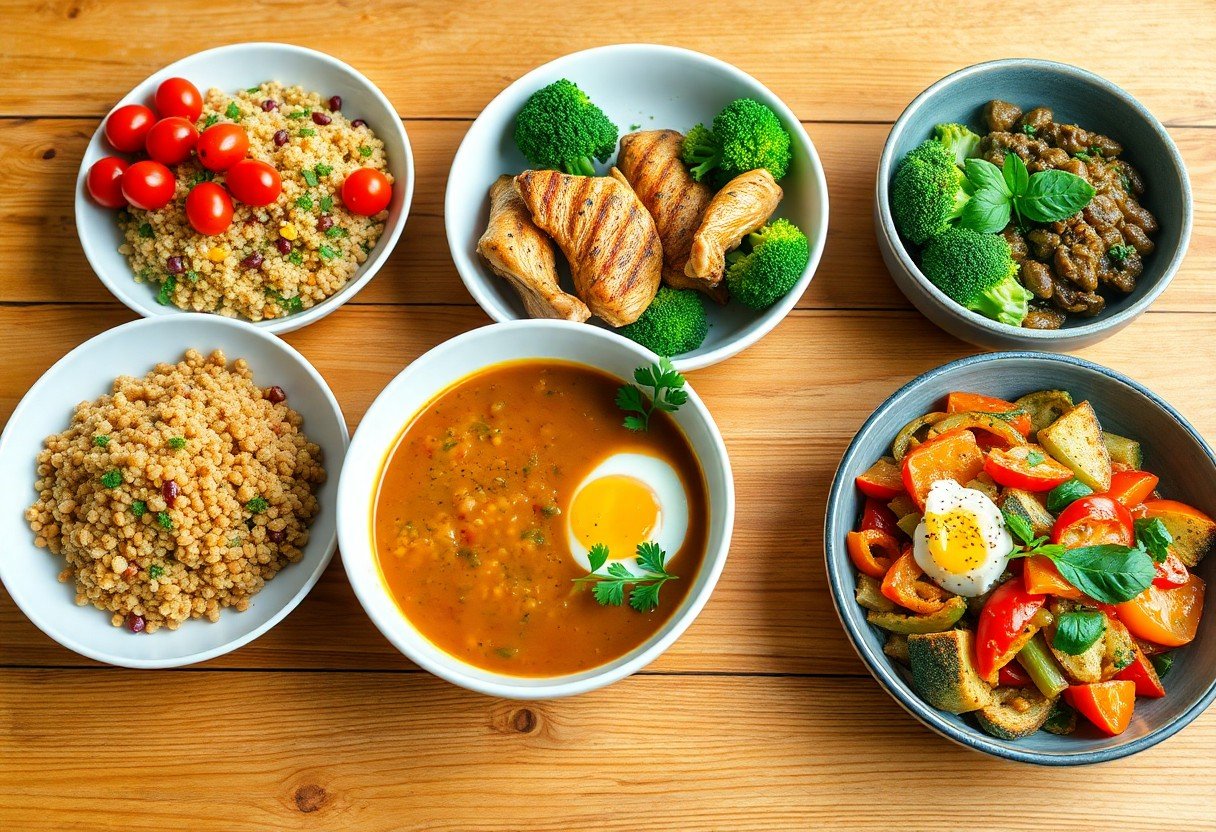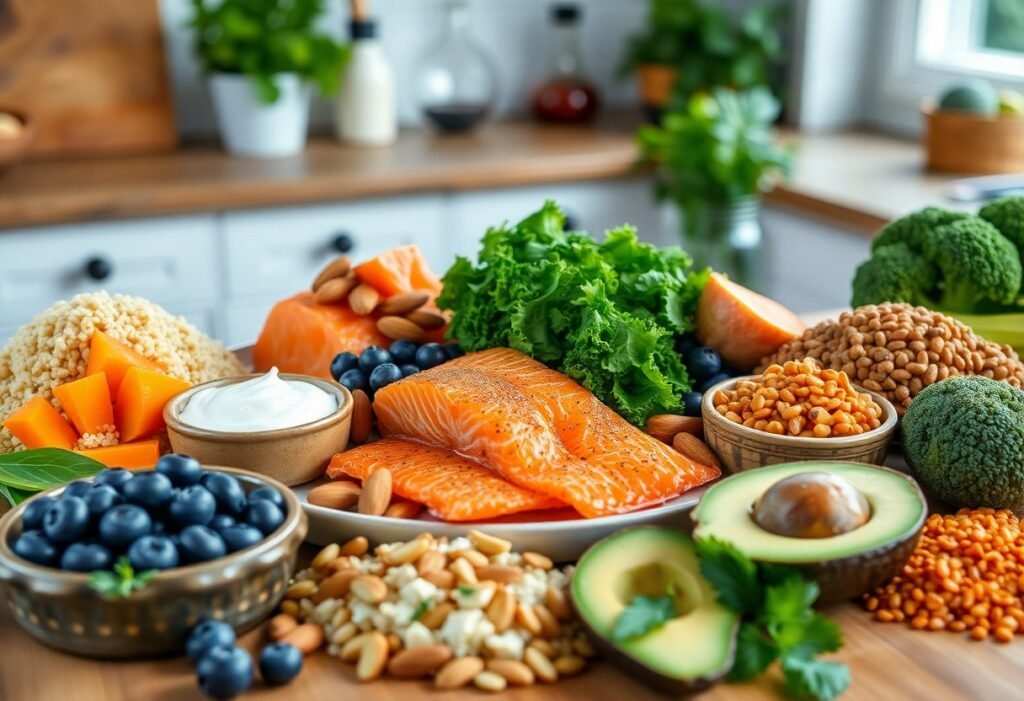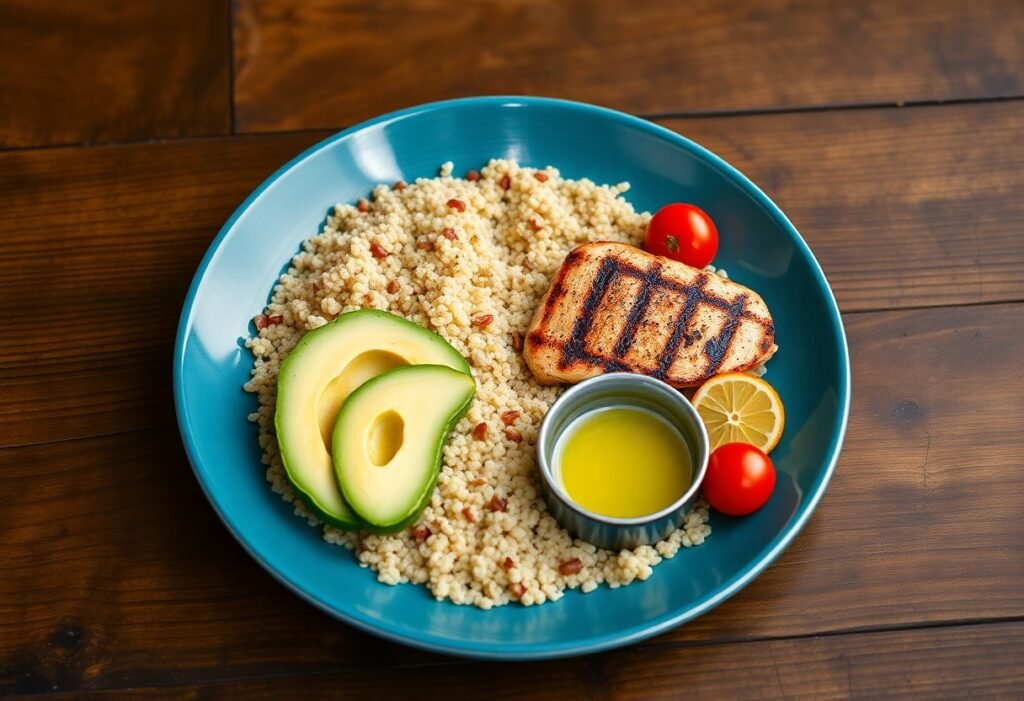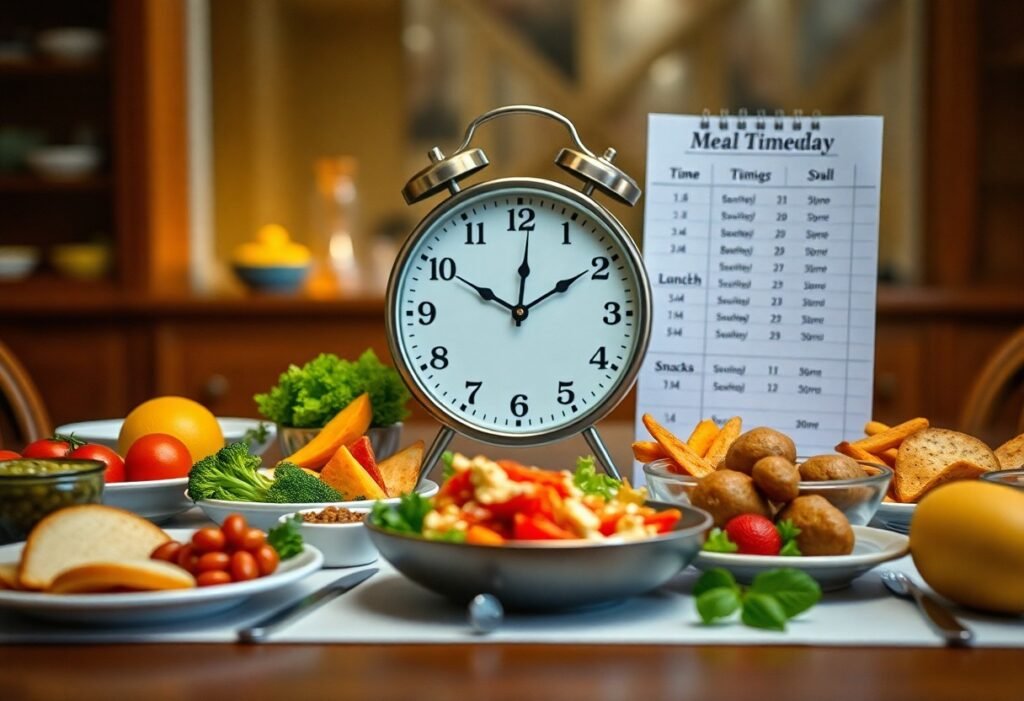Meals can often become a stressful part of your busy life, but you can simplify the process with five budget-friendly healthy options that require minimal time and effort. Each recipe is designed to be nutritious and affordable, ensuring you maintain a balanced diet without breaking the bank. Embrace these easy-to-follow meals that cater to your hectic schedule while keeping your health and wallet in check.
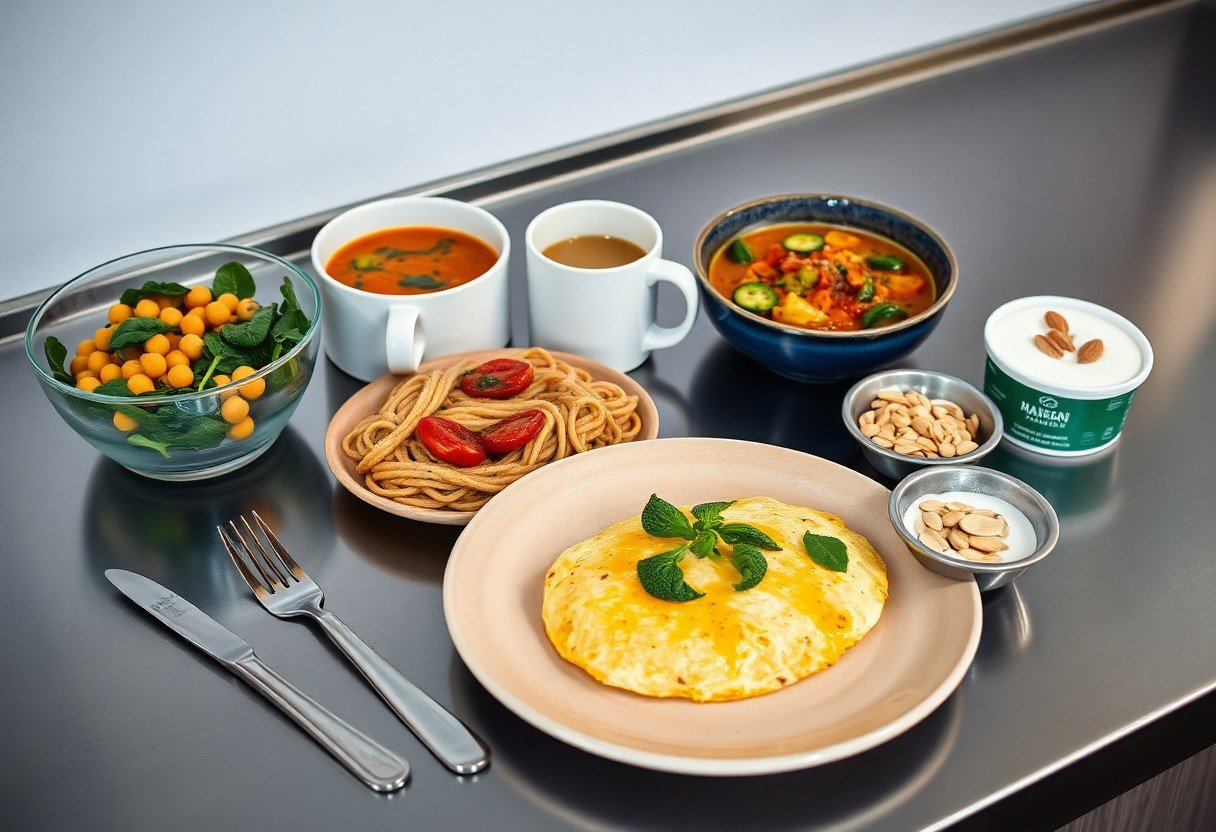
Key Takeaways:
- Utilize meal prepping to save time and promote healthy eating during busy weeks.
- Incorporate affordable ingredients like whole grains, beans, and seasonal vegetables to keep costs low.
- Focus on recipes that provide versatility, allowing for easy modifications throughout the week.
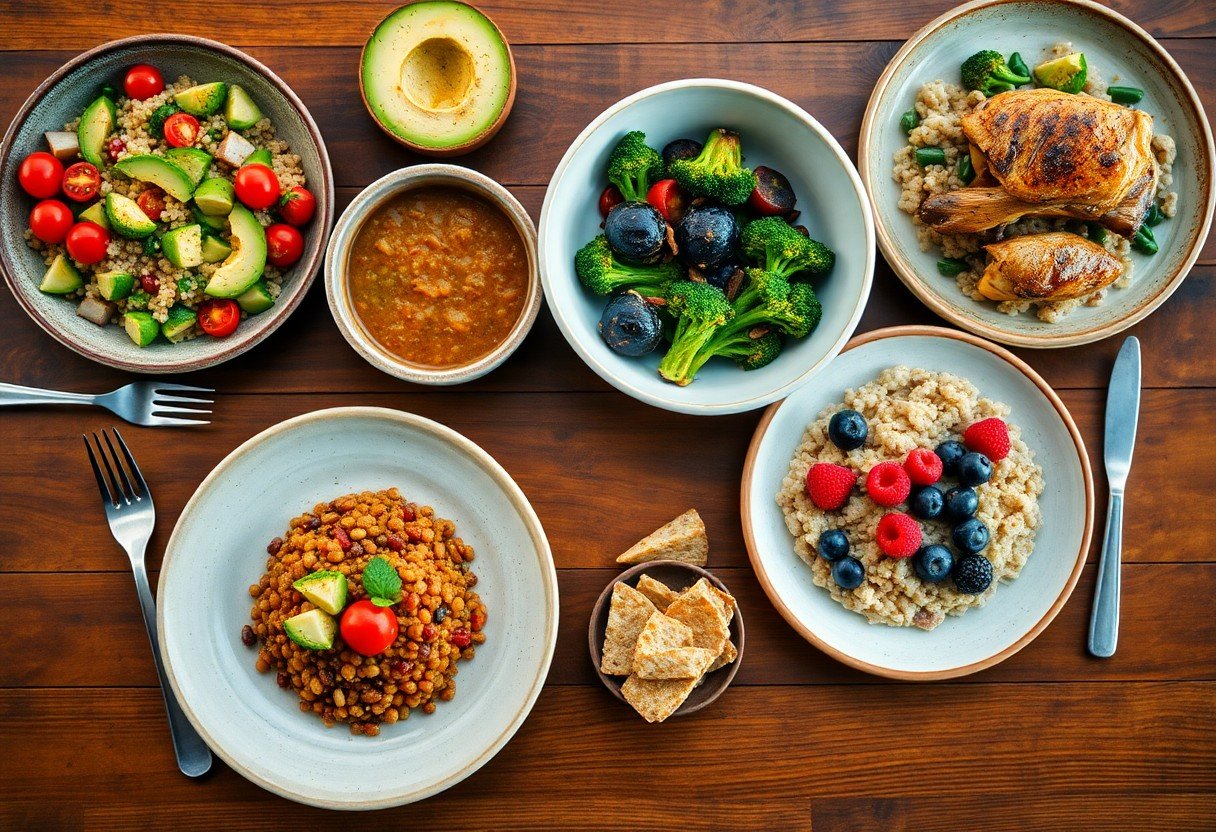
Importance of Healthy Eating
Benefits of a Balanced Diet
A balanced diet provides imperative nutrients that your body needs to function optimally. By incorporating a variety of foods, including fruits, vegetables, whole grains, and lean proteins, you equip yourself with vitamins and minerals that improve overall health. This diversity not only helps maintain a healthy weight but also supports your immune system and reduces the risk of chronic diseases.
Impact on Energy Levels
Your energy levels are directly influenced by what you eat. Foods high in sugar and processed ingredients can lead to energy crashes, while whole, nutrient-dense foods provide sustained energy throughout the day. Consuming a balanced diet helps regulate blood sugar levels, preventing those mid-afternoon slumps.
When you prioritize whole grains, healthy fats, and lean proteins, you’ll experience more consistent energy. For instance, swapping out sugary snacks for a handful of nuts or fruit will keep your energy stable and your concentration sharp. You’ll find it easier to stay active and productive, whether at work or during your leisure time.
Long-term Health Advantages
According to research, individuals who adhere to a balanced diet experience a reduced likelihood of facing serious health issues later in life. For example, a study published in the Journal of Nutrition revealed that those with a diet rich in fruits, vegetables, and whole grains saw a 30% lower risk of chronic diseases. By making intelligent food choices now, you build stronger defenses against illnesses and enhance your quality of life moving forward.
Meal Planning Basics
Time Management for Meal Prep
Effective meal prep can save you hours during your busy week. Allocate a specific day, like Sunday, for prepping meals. Chop vegetables, cook grains, and portion out proteins in advance to streamline your cooking throughout the week. This strategic planning allows you to enjoy healthy meals without the stress of daily cooking.
Creating a Weekly Menu
A weekly menu should focus on balance and variety. Combine proteins, whole grains, and plenty of fresh produce in your meals. You may consider themes for each night, such as Meatless Monday or Taco Tuesday, to simplify selection and inspire creativity in your cooking. Check out 37 Cheap Meals That Cost Less Than $3 Per Serving for affordable ideas.
In constructing your weekly menu, take stock of what’s already in your pantry to minimize food waste and cost. Aim for ingredients that can work across multiple meals. Create options that overlap, such as using roasted vegetables in a salad after they’ve been a side dish, ensuring maximum efficiency and flavor in your meals.
Shopping Tips for Budget-Friendly Ingredients
When shopping, always prioritize seasonal produce and bulk items. These choices are not only cost-effective but often higher in flavor and nutrients. Additionally, look for sales and stock up on freezer-friendly items. Having a well-planned shopping list can keep impulse buys at bay and help you stay within your budget.
- seasonal produce
- bulk items
- sales and discounts
Thou should analyze store advertisements to maximize savings and ensure you’re purchasing the best deals on high-quality ingredients.
To further enhance your shopping strategy, aim to shop the perimeter of the store where fresh options are typically located, such as fruits, vegetables, and proteins. Avoid processed sections, as they rarely fit a budget-friendly and healthy diet. Cultivate the habit of comparing prices per unit to ensure you’re securing the best deals possible.
- fresh options
- processed sections
- price comparisons
Thou must remain vigilant and focused on filling your cart with wholesome, budget-friendly ingredients that you can easily incorporate into your meal planning.
Five Budget-Friendly Healthy Meals
Meal 1: Quinoa and Black Bean Salad
This vibrant quinoa and black bean salad delivers protein and fiber while keeping costs low. Combine cooked quinoa with canned black beans, diced tomatoes, bell peppers, and corn for a nutritious base. Dress with olive oil, lime juice, and spices for flavor. This dish is perfect for meal prep, staying fresh for several days.
Meal 2: Vegetable Stir-Fry
Your vegetable stir-fry is a quick and versatile option that can be tailored to whatever vegetables you have on hand. Use budget-friendly options like broccoli, carrots, and bell peppers, tossing them in a hot skillet with soy sauce and ginger. Serve over rice or noodles for a complete meal.
In just 15 minutes, you can have a colorful dish ready. A stir-fry lets you utilize seasonal produce, maximizing freshness and flavor while keeping prices down. Experiment with adding tofu or chicken for variety, making it a satisfying meal that fits your dietary preferences.
Meal 3: Baked Chicken and Broccoli
Baking chicken and broccoli is not only simple but also budget-friendly and nutritious. Using skinless chicken thighs provides flavor without breaking the bank. Season with garlic, lemon, and a sprinkle of cheese before baking alongside fresh broccoli for a one-pan dinner.
Meal 4: Lentil Soup
A hearty lentil soup is a staple for any budget-conscious meal planner. Lentils are not only cheap but also packed with protein and fiber. Cook them with onions, garlic, and diced tomatoes for a filling soup that’s perfect for cold days or meal prep.
This soup can be made in large batches and freezes well, allowing you to have healthy options on hand for weeks. Adding spinach or kale boosts nutrition, giving you a satisfying dish that’s both affordable and delightful. Lentil soup is also adaptable; you can easily switch up spices to match your taste preferences.
Meal 5: Sweet Potato and Chickpea Tacos
Create delicious sweet potato and chickpea tacos for a delightful twist on traditional tacos. Roast cubed sweet potatoes and canned chickpeas with spices, then serve in corn tortillas. Top with avocado, cilantro, and lime for a fresh finish.
These tacos are not only filling but also provide a wealth of nutrients, including vitamins A and C. They can easily be customized with different toppings or salsas, making them a crowd-pleaser. Plus, sweet potatoes and chickpeas are inexpensive ingredients that keep meals satisfying while adhering to your budget.
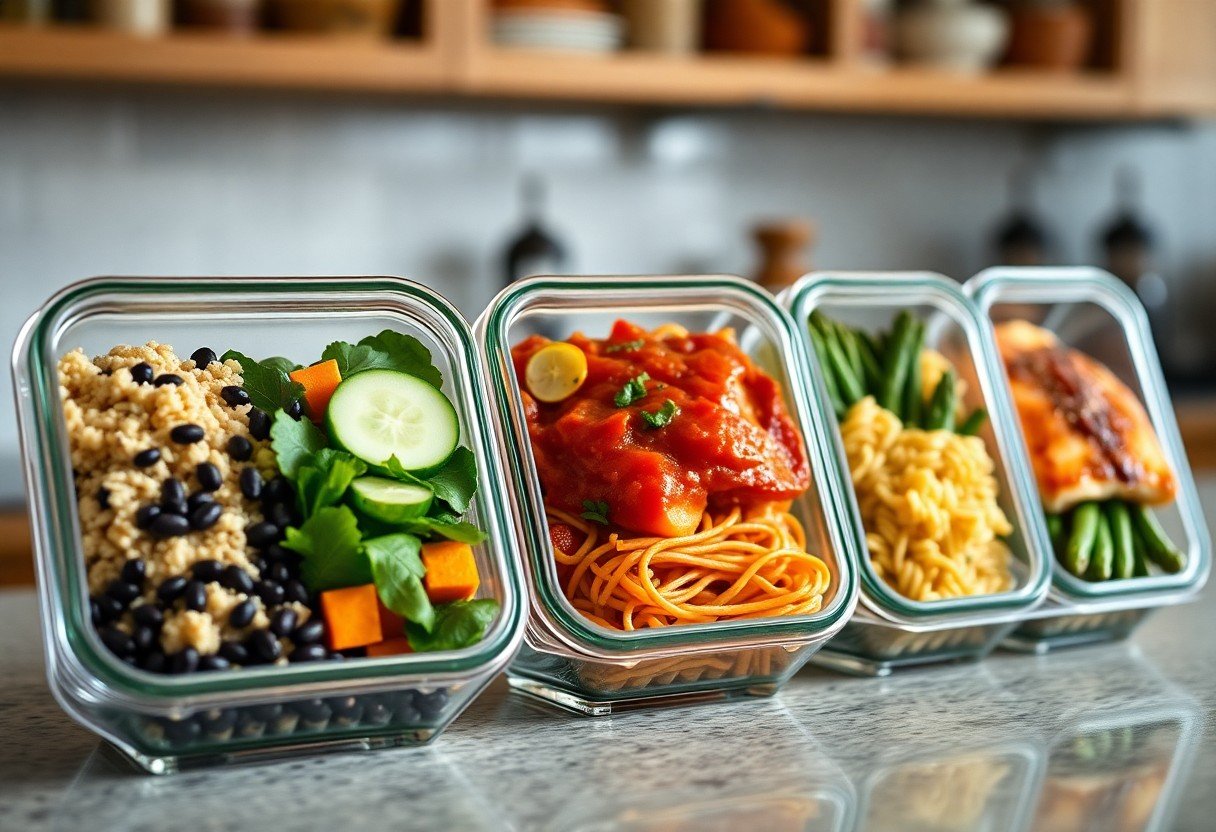
Tips for Making Meals Last
- Plan your meals for the week
- Use airtight containers for storage
- Label and date your food
- Keep your refrigerator organized
- Utilize your freezer effectively
This will help you maximize freshness and minimize waste.
Proper Storage Techniques
To ensure your meals stay fresh longer, use airtight containers made of glass or BPA-free plastic. Divide larger meals into smaller portions before storing, as this promotes even cooling. It’s imperative to let food cool completely before sealing to prevent condensation, which can lead to spoilage.
Reheating Safely
When reheating, ensure your meals reach an internal temperature of at least 165°F to eliminate bacteria. It’s best to reheat food in smaller portions rather than all at once, as this promotes thorough heating.
Using a food thermometer can help you accurately check temperatures when reheating. Additionally, stirring food during the reheating process allows for even heat distribution, reducing cold spots where bacteria can survive. Avoid multiple reheatings to preserve taste and safety.
Freezer-Friendly Options
Many meals can be prepared ahead and frozen for later use. Soups, stews, and casseroles are excellent options that freeze well without losing their taste or texture.
For optimal freezing results, cool dishes before transferring them to the freezer. Using freezer bags or containers labeled with the contents and date also simplifies meal selection later. Aim to consume frozen meals within three months for the best quality. This strategic approach allows you to enjoy homemade meals without the rush of daily cooking.
Incorporating Snacks and Sides
Budget-Friendly Snack Ideas
Snacking can fit into your budget while keeping you healthy. Opt for fresh fruits like apples or bananas, which are often affordable and nutrient-rich. You can also consider carrot sticks with hummus or popcorn seasoned with your favorite spices as satisfying options. Buying in bulk can save costs, especially for items like nuts or yogurt, allowing you to keep healthy snacks on hand without breaking the bank.
Healthy Side Dishes to Pair with Meals
Incorporating side dishes into your meals can elevate your nutrient intake without significantly increasing expenses. Think of simple, cost-effective options like steamed broccoli, quinoa, or a mixed green salad. These sides not only add flavor but also enhance the overall healthiness of your meals, making them more satisfying and balanced.
Specific side dishes, such as roasted sweet potatoes or sautéed spinach, are not only affordable but also versatile. Each option is packed with vitamins and minerals that complement main dishes. For instance, pairing grilled chicken with a side of quinoa and steamed veggies provides protein and fiber, giving you more energy throughout your busy week. You might also want to try seasonal vegetables, which can reduce costs while adding variety to your meals, keeping your diet interesting and nutritious.
Final Words
Ultimately, incorporating these five budget-friendly healthy meals into your weekly routine can simplify meal planning and enhance your overall well-being. By prioritizing nutritious ingredients, you can maintain a balanced diet without overspending or sacrificing time. As you navigate your busy schedule, these recipes provide delicious alternatives that nourish your body while keeping costs low. Embrace the convenience and health benefits of these meals, and enjoy more time for what truly matters in your life.
FAQ
Q: What are some examples of budget-friendly healthy meals for a busy week?
A: Examples include quinoa salad with vegetables, lentil soup, stir-fried brown rice with mixed veggies and eggs, baked sweet potatoes with black beans and salsa, and whole grain pasta with marinara sauce and spinach.
Q: How can I prepare these meals quickly?
A: Meal prepping on the weekend can save time during the week. Chop vegetables, cook grains in bulk, and store meals in portioned containers. Consider using a slow cooker or instant pot for easy cooking.
Q: Where can I find affordable ingredients for these meals?
A: Look for seasonal produce at local farmers’ markets, buy in bulk at warehouse stores, and check for sales at grocery stores. Frozen vegetables and canned beans are also usually budget-friendly options.
Q: How can I ensure these meals are balanced and healthy?
A: Aim to include a variety of food groups: lean proteins, whole grains, healthy fats, and plenty of fruits and vegetables in each meal. Use herbs and spices for flavor without added calories.
Q: Can I adapt these meals for specific dietary preferences or restrictions?
A: Yes, you can easily modify ingredients to suit dietary needs. Substitute meat with plant-based proteins for vegetarian options, use gluten-free grains, or adjust ingredients to lower sodium or sugar as needed.


